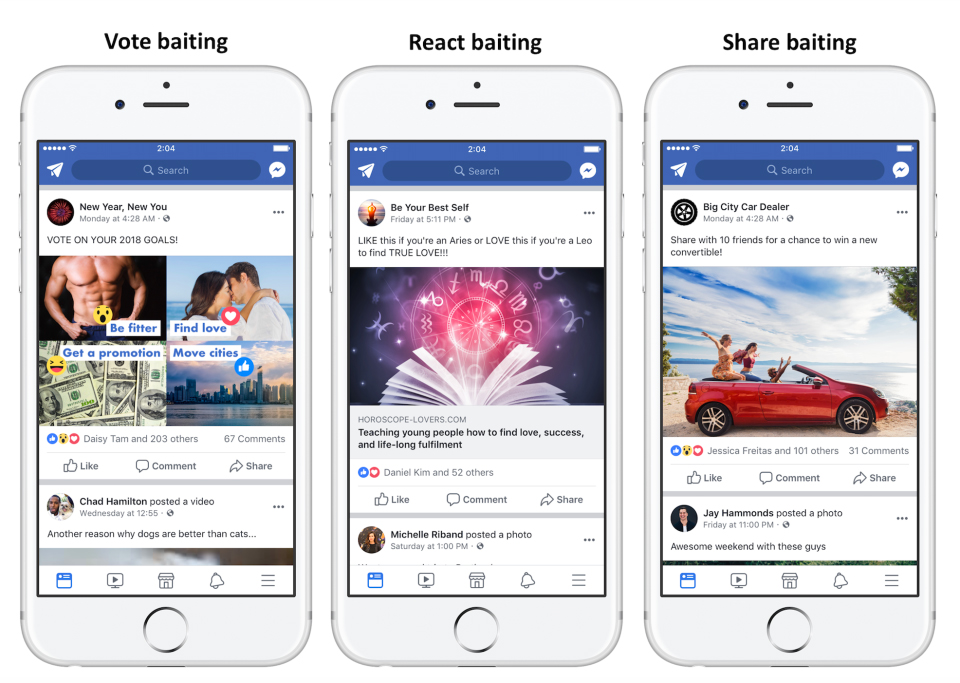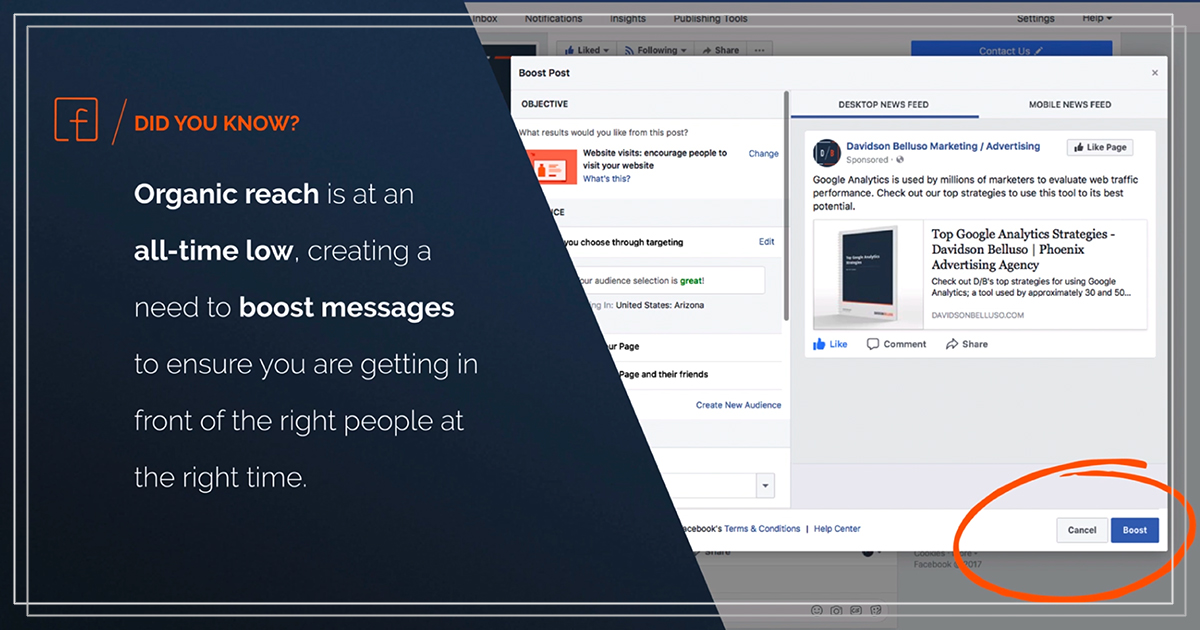A lot has been made of the changes recently announced by Facebook. But what does a brand, company or organization need to know?
In the simplest terms, Facebook is changing its content formula to better reflect an environment based on personal connections, conversations and shared content.

In making the announcement Jan. 11, Facebook said it would “prioritize posts that spark conversations and meaningful interactions between people,” and “prioritize posts from friends and family over public content, consistent with our News Feed values.”
As Facebook puts it, “These are posts that inspire back-and-forth discussion in the comments and posts that you might want to share and react to – whether that’s a post from a friend seeking advice, a friend asking for recommendations for a trip, or a news article or video prompting lots of discussion.”
The flip side, and where it impacts marketers and those managing company pages, is that it reduces the direct organic impact of brands and news organizations.
We have known for a while that organic reach – the act of making a simple post and expecting it to reach our audience – has been diminishing. This move by Facebook will limit organic reach on pages even further.
That said, there are still important strategies that can be employed to keep connecting with our communities and potential customers.
Drive Engagement
The most significant focus of Facebook’s stated effort is to put an emphasis on engagement and interaction. They see the ideal post as one that generates conversation and sharing with their friends and connections. That interaction is the heart of the social environment they are trying to recreate.
Pages for businesses and organizations that generally don’t generate many reactions will see the biggest decreases in the distribution of content – if it’s not something that people want to talk about, Facebook considers it less desirable content. But, if a page posts information that people interact with, your distribution will see less of an impact.
From a brand perspective, this sets the bar high. We need to focus on good, interesting and ultimately engaging content. We can ask more questions and focus less on talking at people.
Facebook posts need to be based on content that people will comment on and share with their friends. We need to listen to our audiences and understand what they want. The irony of course, is this is the type of content we should have been posting all along.
Avoid “Engagement Bait”
It’s not just about engagement – the key is to generate authentic engagement. Tactics designed to increase engagement artificially are considered “engagement-bait” and will cause the post to be demoted.
These tactics include: “Share with 10 friends to win a prize,” or “Like this to vote yes, love it to vote no.”
In this case, the answer lies in building legitimate discussion and conversation and not begging for likes.

Make it Live
Throughout the social landscape, video has become a driving force for content. But the way Facebook sees it, the type of video makes a difference. And live video is the style of choice.
Clicking on and watching a video is generally considered a passive action. A person might comment at the end, or may just scroll through and watch specific parts. But, in general, it is not something that drives significant conversation.
However, when you participate in a live video on Facebook, you can be part of the action. You are able to “talk” directly to those on the live feed and ultimately be part of the event. Facebook cites that live video is six times more likely to generate interactions and engagement.
Increase Paid Content
All of the above centers on free content. Advertising and boosted content will still continue to be placed within news feeds. The changes dictate that we will need to recommend and implement a greater mix of paid social content in their overall strategy.
If you have a post that could generate comments and sharing, consider paying a small amount to boost it from the very beginning. Even a small boost can open it to a larger audience – and the more interaction it gets, the greater the likelihood for it to garner organic views.

Encourage Users to Look for Your Content
The biggest wildcard in these changes sits with the individual user. A user will have the ability to change their feed settings so specific page content will be at the top of the feed.
A user can go to a page, click on “Following” and select “See First” under “In your news feed.”
This is definitely something we can share with our users. But, we should use caution not to sound too forceful in our explanations.
Expect More Changes
Throughout its lifespan, Facebook has made changes to its algorithms countless times. And in many cases, the immediate reaction from page managers was fear.
More often than not, the implementation of those changes was much less concerning than originally feared.
In this case, Facebook has been heading down this road for a long time, as it seeks to make its content more relevant and authentic. All we can do is try to understand that direction and make the appropriate efforts to better reach our audiences.



